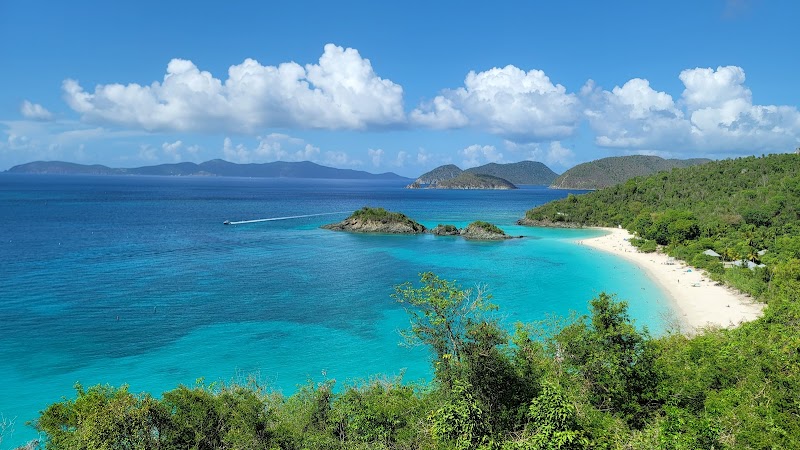Dive Into Adventure: Scuba Near St Thomas, VI’s Vibrant Underwater Realm
Explore exceptional scuba diving near St Thomas, VI, where vibrant reefs, historic wrecks, and clear tropical waters await. This guide offers practical advice and must-know tips for divers eager to experience the Caribbean’s underwater thrills.
Choose Certified Dive Operators
Always book with reputable, certified dive shops to ensure safe equipment, knowledgable guides, and adherence to environmental standards.
Check Weather and Sea Conditions
The currents near St Thomas can shift quickly; always confirm conditions prior to your dive and follow operator advice for safety.
Bring Appropriate Exposure Protection
A 3-5mm wetsuit is generally sufficient year-round, but consider local water temperatures and personal comfort for prolonged dives.
Respect Marine Life and Regulations
Avoid touching coral or disturbing marine animals. Conservation ensures that these reefs remain healthy for future explorers.
Dive Into Adventure: Scuba Near St Thomas, VI’s Vibrant Underwater Realm
Scuba diving near St Thomas, VI, opens a gateway to some of the Caribbean’s most accessible and thrilling underwater landscapes. The island’s crystal-clear waters reveal coral reefs, historic wrecks, and diverse marine species, perfect for beginners and advanced divers alike. Dive shops and guided tours operate year-round, offering well-supported excursions from Charlotte Amalie and beyond.
Popular dive sites like Cow and Calf Rocks and the wreck of the RMS Rhone offer unique encounters, from fragile corals to schools of darting fish, all framed by the dynamic Caribbean currents that push and pull, shaping this lively ecosystem. Visibility often exceeds 60 feet, inviting divers into a world where sponges and reef fish playfully respond to your approach.
Planning a scuba trip here? Prioritize certification and equipment checks before departure. Warm water wetsuits (3mm to 5mm) suffice for most seasons. Water temperatures hover between 78°F and 82°F, influenced by offshore currents that occasionally challenge even seasoned divers. Dive operators in St Thomas provide options from day-trips to multi-dive adventures, making it easy to tailor your experience.
The keywords driving scuba interest in St Thomas center on phrases like "St Thomas scuba diving," "VI scuba trips," "Caribbean scuba near St Thomas," and "scuba diving charters St Thomas." These terms reflect a steady demand for dive tours, instruction, and equipment rental in the area, reinforced by the island’s well-established dive community and its vibrant marine environment.
Diving in St Thomas is more than an excursion—it's an engagement with a fiercely alive ocean realm demanding respect, attention, and preparation. Whether you're exploring reef walls adorned with sponges or gliding alongside sea turtles, St Thomas presents an adventure with practical appeal and undeniable allure.
Nearby Trips
All Adventures
Boat Charters
Water Activities
Adventures near Charlotte Amalie
Discover the unique and memorable adventures that make Charlotte Amalie special.
Frequently Asked Questions
What is the best certification level needed for scuba diving in St Thomas?
An Open Water Certification is generally sufficient for most dive sites around St Thomas. For deeper wrecks such as the RMS Rhone, an Advanced Open Water certification or equivalent experience is recommended.
Are there options for beginner divers or snorkeling only?
Yes, many operators offer beginner scuba courses and guided snorkeling tours at shallow reefs, perfect for first-timers or those wanting a gentler underwater glimpse.
What marine life is commonly spotted during dives near St Thomas?
Divers frequently encounter colorful parrotfish, angelfish, sea turtles, nurse sharks, and a variety of coral species. Seasonal visits may include eagle rays and barracuda.
How do I prepare for the currents around the dive sites?
Dive guides will brief you on conditions beforehand. Stronger currents push divers along reef walls, so good buoyancy control and following the group closely are essential.
Are there any notable environmental concerns for divers to be aware of?
Avoid touching corals or stirring sediment, which can damage fragile ecosystems. Many dive operators actively support reef conservation and instruct divers on eco-friendly practices.
What is the typical visibility for scuba dives near St Thomas?
Visibility ranges from 50 to 80 feet, varying with season and weather. Winter months tend to provide the clearest water, while summer rains can reduce clarity temporarily.
Recommended Gear
Mask and Snorkel
A high-quality mask ensures clear vision, while a snorkel helps conserve air during surface swims.
3-5mm Wetsuit
Provides thermal protection and some abrasion resistance in cooler underwater conditions.
Dive Computer
Monitors depth and time for safe dive profiles and helps manage no-decompression limits.
Fins
Streamline movement underwater, conserving energy and facilitating maneuverability around reefs and wrecks.
Local Insights
Hidden Gems
- "Cow and Calf Rocks - a less crowded site known for its dramatic swim-throughs"
- "Secret Harbor Reef - favored by marine biologists for unique sponge formations"
Wildlife
- "Hawksbill sea turtles"
- "Queen angelfish"
- "Reef squid"
History
"St Thomas’ underwater landscape hosts historic shipwrecks, including the RMS Rhone, a 19th-century mail ship sunk in 1867, creating one of the Caribbean’s premier wreck dive sites."
